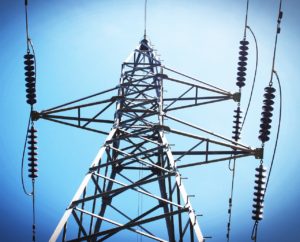The recent announcement of Bayat Power’s exciting new Independent Power Producer (IPP) program—an initiative that will see a new, three-phase, US$250M gas-fired power plant constructed in Sheberghan in northern Afghanistan—represents a major step forward for Afghanistan’s energy sector. Not only is it the country’s first privately financed project of its kind, but when all three phases are fully operational, the plant will feed a much-needed 200 MW of additional power into Afghanistan’s energy grid, which is currently struggling to meet rising demand.
To get a sense of how significant the Bayat Power project is and the important contribution it will make to powering Afghanistan, it can help to have a better overall sense of the present state of energy in Afghanistan. Read on to learn more about where Afghanistan’s energy system has come from, where it’s at now, and where it’s headed.
Past
At the beginning of the 2000s, after nearly three decades of conflict, Afghanistan’s energy system was virtually non-existent. Much of the critical infrastructure for power generation, transmission, and distribution had been destroyed or severely damaged, and what remained was nowhere near enough to serve even the capital adequately, let alone the rest of the country. In 2002, a mere 5-6% of Afghans had access to grid electricity, and the power that was available was often inconsistent and prone to prolonged outages. A household in Kabul, for example, might receive about four hours of power every other day. Some people turned to loud and noxious diesel-generators to provide power, but the vast majority of the population simply went without.
 One of the first key steps in addressing this power shortage came in the form of a new transmission line linking Kabul with Uzbekistan, one of Afghanistan’s northern neighbors. Uzbekistan had (and still has) a comprehensive power generation and distribution network, and was willing to sell some of its surplus to Afghanistan. Together with a consortium of international development partners led by the Asian Development Bank (ADB), Afghanistan set to work on the North East Power System (NEPS). One of the country’s largest-ever infrastructure projects, NEPS involved the construction of more than 1,300 transmission towers across 420 kilometers of some of the earth’s most challenging terrain. This phase of the project took more than four years to complete.
One of the first key steps in addressing this power shortage came in the form of a new transmission line linking Kabul with Uzbekistan, one of Afghanistan’s northern neighbors. Uzbekistan had (and still has) a comprehensive power generation and distribution network, and was willing to sell some of its surplus to Afghanistan. Together with a consortium of international development partners led by the Asian Development Bank (ADB), Afghanistan set to work on the North East Power System (NEPS). One of the country’s largest-ever infrastructure projects, NEPS involved the construction of more than 1,300 transmission towers across 420 kilometers of some of the earth’s most challenging terrain. This phase of the project took more than four years to complete.
When NEPS came online in January 2009, transmitting 40 MW of power from Uzbekistan to Kabul, the city experienced an economic and population boom as its residents enjoyed a steady supply of electricity for the first time in recent years. Since its launch, NEPS’ capacity has been increasing progressively; further investment from USAID in 2012 provided another significant boost, more than doubling the transmission line’s power.
Two other electric grids were later developed to serve those parts of the country not connected to NEPS: South East Power System, which links Kandahar and Helmand to a hydropower plant, and the West Power System, which links the Herat region with Iran and Turkmenistan.
Present
Today, the connection rate to Afghanistan’s power grids has dramatically increased from its 2002 low of 5% to approximately 30%. Much of this increase has taken place in and around Kabul, where a nearly uninterrupted supply of energy is now available to close to three-quarters of the city’s residents. However, there is still a major divide between access to power in urban communities and rural areas. Despite the fact that 75% of Afghans live in rural regions, only about 10% of electricity distribution serves these areas, meaning that large sections of Afghanistan’s population remain completely cut off from the country’s power grids.
Furthermore, energy demand throughout the country is growing rapidly. Between 2014 and 2015, there was a 25% increase in power demand in Afghanistan’s major cities, and that’s accounted for almost entirely by households, who currently represent more than 90% of total power consumption.
In terms of where Afghanistan’s power comes from, the country is still heavily dependent on foreign energy imports. In 2015, 78% of Afghanistan’s total consumed electricity came from imports from neighboring Uzbekistan, Tajikistan, Turkmenistan, and Iran.
Future
While huge progress has been made in bringing electricity to Afghanistan over the last 15 years, there is still much to be done. One of the goals is to increase electrification in rural areas, in order to facilitate greater industrial development. In addition, the country is increasingly focused on developing strong and stable sources of domestic power in order to increase its energy security and diminish its reliance on imported energy. Initiatives like the Bayat Power IPP program are therefore highly significant in helping Afghanistan meet the increasing energy needs of its growing and developing population, and ensuring the country’s future prosperity.

